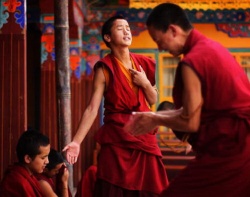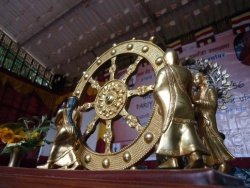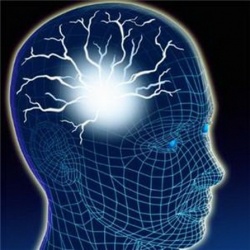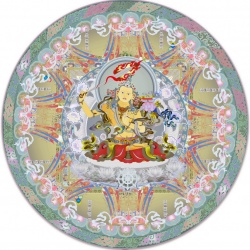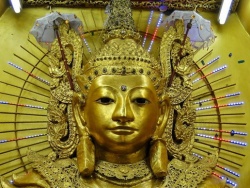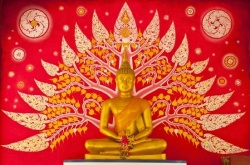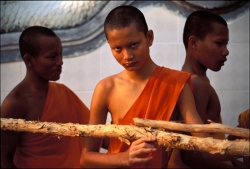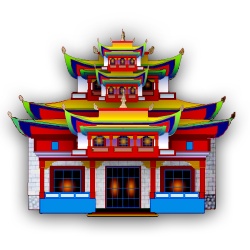Master Warriors
MASTER WARRIOR..."Those who have been fearless in their search and fearless in their proclamation belong to the lineage of master warriors, whatever their religion, philosophy, or creed...They are the fathers and mothers of Shambhala." (Trungpa: 1984..pg 179)...."The basic quality of the master warrior is that his presence evokes the experience of the cosmic mirror and the magic of perception in others." (Trungpa: 1984...pg 176)..."The master warrior has relaxed completely into the unconditional purity of the cosmic mirror." (Trungpa: 1984..pg 177)..."the birth of the master warrior takes place in the realm of the cosmic mirror. The master warrior is humble, extremely humble." ...(Trungpa: 1984..pg 176-178)
Ayu Khandro, (Ayu Khandro Dorje Paldrön) (1838–1953) was a teacher of Dzogchen and Tantric Buddhism in East Tibet. She was a student of both Jamyang Khyentse Wangpo and Nyala Pema Dündul.....Ayu Khandro was held to be an incarnation of Vajrayogini. She spent many dozen years in dark retreat and also practiced and taught a tantric long-life practice and was an adept chödpa......She is said to have transmitted her knowledge and gave empowerments to Chogyal Namkhai Norbu Rinpoche.
Excerpts From: Tsultrim Allione's "Women of Wisdom"......
Namkhai Norbu: "after a journey of three days, we arrived at A-Yu Khadro's place in Dzongsa. She lived in a little stone hut near a river in a meadow under the cliff face of a mountain to the east of a small Sakya monastery. The hut was tiny; with no windows." She had two assistants, an old man, Palden, and an old nun, Zangmo. They were also strong practitioners of yoga and meditation.
We were very happy and amazed to see this situation. When we entered Khadro's room for the first time, only one butter lamp was lit. She was 113 at that time, but she did not look particularly ancient. She had very long hair that reached her knees. It was black at the tips and white at the roots. Her hands looked like the hands of a young woman. She wore a dark-red dress and a meditation belt over her left shoulder. During our visit we requested teachings, but she kept saying that she was no one special and had no qualifications to teach.
...the next meeting she told me that she had had an auspicious dream that night of her teacher, Jamyang Khentse Wangpo.5 He had advised her to give me the teachings of [[Khadr] Sangwa Kundu]], 6 his gongter. This was not the teaching I had asked for, but was a teaching she had received from him directly which she had practiced extensively. .....The next day around eleven we began the initiation of Khadro Sangdu. From that day on, every morning she gave teachings including the practices of the subtle nerves and the subtle breath. In the afternoon at the end of her meditation session, she gave further explanation of the Khadro Sangdu and the Chod of Machig Lapdron, the Zinba Rangdrol. This was the Chod practice she had done for many years when she was younger.
A month later, she began the Yang-Ti, one of the most important of the Dzog Chen teachings in the most advanced Upadesha series, having to do with the practice in the dark. This teaching took five days. Then she began teaching on the Longchen Nying Thig. ....
in the Year of the Wood Bird, 1885, in the first month on the day of the dakini I began a seven-year retreat. From the beginning I spent most of my time doing the practice in the dark. At first this was sometimes difficult so I alternated the dark and light,* but the majority of the time was spent in complete darkness.
Ayu Khandro....."When I was fifty-three, in the Year of the Iron Rabbit, 1891, in the fifth month on the day of Padma Sambhava, when I was doing practice in the dark, I had a vision. I saw a very clear sphere; inside it were many dakinis carrying another sphere with the form of Jamyang Khentse Wongpo inside. I was sure this meant that he had been invited by the dakinis to leave this world of suffering.....Although I still had seven months before the end of the seven years I had promised myself to complete, I decided it was more important to see him before he left his body. So I left my hut and a few days later went directly to him in Dzongsar.....http://www.khandro.net/book-womenofwisdom.htm
(Dark retreat (Tibetan: mun mtshams) refers to advanced practices in the Dzogchen lineages of the Nyingmapa, Bönpo and other schools of Tibetan Buddhism. The time period dedicated to dark retreat varies from a few hours to decades. Dark Retreat in the Himalayan tradition is a restricted practice only to be engaged by the senior spiritual practitioner under appropriate spiritual guidance. This practice is considered conducive for navigating the bardo at the time of death and for realising the rainbow body. The traditional dark retreat requires stability in the natural state and is only suitable for advanced practitioners. Ayu Khandro and Dilgo Khyentse are examples of modern, if not contemporary, practitioners of significant periods of Dark Retreat sadhana. Ayu Khandro performed the Yang-Ti (Tibetan), an advanced practice of the Dzogchen Upadesha, a version of the Dark Retreat.)
A-yu Kha'dro Tsultrim Allione's Women of Wisdom is a compilation of the namthars several remarkable women of the Tibetan Buddhist tradition. Many of these biographies are hagiography, since legendary aspects are included.
THE GREAT TIBETAN RIMAY TEACHER JAMGON KONGTRUL (Lodro Taye: 1813-1899)..."One may wonder why this description of the universe does not accord with that of other systems. The Enlightened Ones did not view any aspect of either the environment or the inhabitants of our world system as ultimately real. Therefore, the teachings are not one that, based on a belief in a single view, sets forth a particular system as the only valid one. Instead, they spoke in response to the various levels of capabilities, interests, and dispositions of those to be guided to enlightenment." ...(Jamgon Kongtrul:Myriad Worlds...1995..pg 166).
His father was Tendzin Yungdrung a Bonpo Lama, and of the royal Khyung clan of accomplished practitioners,..Milarepa's ancestors were nomads of the Khyungpo (khyung po) clan from the northern region of the “central horn,” (dbus ru) one of two administrative regions of Tibet's central province (dbus).
JAMGON KONGTRUL THE GREAT..."Well the worst that can happen now is that they will kill you. It is best to stay at least a hundred miles from a center of dispute."...Letter from Khyentse Rinpoche quoted in Myriad Worlds. It is in reference to threats made to Jamgon Kongtrul because he gave teachings and empowerments in the both the ancient Bon and Nyingma traditions. He continued to support these traditions throughout his life. It was 22 years before he returned to the monastery referred to.
The autobiography of Jamgon Kongtrul Lodro Thaye shows that there was a period where he had to leave the monastery of Palpung, the seat of the Tai Situpas. In 1873 the King of Derge visited Palpung. While he was there, a great number of monks gave him an indictment which accused Jamgon Kongtrul Rinpoche and Bontrul Rinpoche. Khyentse Rinpoche advised the king not to pay attention to the matter. He said that this would greatly harm the buddhist teachings in Eastern Tibet, but the young Situ Tulku, Pema Kunsang, insisted on a judicial investigation. It was done, with the effect that most of the accusations were proved to be invalid. However, Jamgon Kongtrul Rinpoche and Bontrul Rinpoche had to leave Palpung. The latter died shortly thereafter and Jamgon Rinpoche did not come back to Palpung until the death of Situ Pema Kunsang 14 years later.
JAMGON KONGTRUL (Lodro Taye: 1813-1899)... "One may wonder why this description of the universe does not accord with that of other systems. The Buddhas did not view any aspect of either the environment or the inhabitants of our world system as ultimately real. Therefore, the teachings are not one that, based on a belief in a single view, sets forth a particular system as the only valid one. Instead, the Buddhas spoke in response to the various levels of capabilities, interests, and dispositions of those to be guided to enlightenment." ...(Jamgon Kongtrul:Myriad Worlds...1995..pg 166)....(Jam-mgon: gentle protector)...'Was never argumentative and sophistic, and he never aligns himself with a particular point of view. He also defends, albeit humbly, philosophies, schools, and masters that have been attacked." (Kongtrul: 1995..pg 37)...."Jamgon Kongtrul made things more curious by writing in his work: 'dgra-bla'."..(Karmay: 1975..pg 218)...
THOMAS MERTON...."He was the first genuine person I met from the West. We had dinner together in Calcutta and talked about spiritual materialism. We drank many gin and tonics. We planned to work on a book containing sacred writings of Christianity and Buddhism." (Trungpa: Heart of the Buddha..pg 213)
SUZUKI ROSHI..."In June of 1970. I first met Suzuki Roshi; an old man with a piercing look...all his gestures and communications were naked and to the point, like dealing with the burning tip of an incense stick...Roshi talked about the fact that Americans name only their biggest mountains, (like conquerors)...they can't be bothered to name the smaller mountains and the details"...(Trungpa:Garuda 1:1972..pg 45)....."If you cling to some idea created by you, like self, or to some objective world, you will be lost in what you created by your mind. One after another you are creating many kinds of worlds. There is no end to it." (Suzuki Roshi...Garuda 1:1972)
DO KHYENTSE..(1800-1859)...."was a highly eccentric master. Was like a Samurai, with his long hair, his rakish clothes, and his passion for riding beautiful horses." Great story about Do Khentse knocking out Patrul Rinpoche in: (Sogyal: 1992..pg 157.)...."Do Khyentse wrote a book of Dzogchen teachings in the style and language of the Gesar epic"..(Samuel:1993..pg 540)
DILGO KHENTSE RINPOCHE..(1910-1991)..."Shambhala looks like its not Buddhadharma, but itself is the essence of Buddhadharma. It is training of the mind that is a realization which embodies view, meditation and practice by itself. If one has that, then it is a path that is complete and will embody the perfect state of mind." (June 1987)
LONGCHENPA....(1308-1363)..."The Seminal Heart Movement began in the 11th century in Tibet and was systematized in the 14th century by Longchenpa. A reformulation of the Dzogchen. "The Treasury of the Supreme Vehicle" is a verifiable encyclopedia of Seminal Hear thought and practice." (Lopez: 1997...pg 293)...
10th KARMAPA...(1604-1674) was an excellent painter. He learnt the patterns for the painted representations of Kalapa." (Stein: 1972..pg 281)..
TILOPA...10th century Bengali yogin. Born in eastern region of Jago.
MIPHAM..(Jamgon Mipham Namgyal Gyatso).(1846-1912)..The Tibetan text: "The Lamp that Illuminates the Practice of the Miraculous Juthig of Existence" : interesting and clear descriptions of the Drala and Werma can be found in two passages from the monumental work on the Juthig divination. The first passage describes the 'Unicorn' Drala Seu Ruchig, one of the most important manifestations among Drala and Werma.Also information on Lha, Nyen, and Lu." (Norbu: 1995: pg 56) ... See also Mipham's: "The Great Commentary on the Kalachakra" for a description of Shambhala. (Trungpa:1984..pg 26)...."Mipham argued for a Madhyamika interpretation of the Nyingma teachings, in this respect opposing the tendancy of other Rimed teachers such as Jamgon Kongtrul to employ more positive (shentong) phraseology." (Samuel: 1993..pg 465)...
KARMALINGPA...."14th Century revelation entitled "The Profound Doctrine of Wisdoms Natural Freedom in Encountering the Peaceful and Wrathful Deities" known in the west as "The Tibetan Book of the Dead"....(Lopez: 1997...pg 458)...
ATISHA....(982-1054)...Atisha spent 12 years in Sumatra before he went to Tibet in 1042 AD to teach. He visited Mitra Vihara, near the Nepalese Therai. (Lopez: 1997...pg 174,163)....[See Chandra Lokesh: "Biography of Atisha"...Shata Pitaka Series: Delhi: 1982]...
CHOGYUR LINGPA...The Tibetan terma text: "Precious Casket to Realize Riches" by Chogyur Lingpa (1829-1870). A discussion of cha (cha'o?) and a ritual for summoning the cha and yang from the four directions: China, India, Tazig, and the North of Gesar". (Norbu:1995..pg 63)
JAMYANG KHYENTSE WANGPO...The Tibetan text: "The Obtainment of Glory, Wishes, Fortune and Longevity through the practice of Summoning the Yang" by Jamyang Khentsi Wangpo (1820-1892). Instructions on developing and increasing one's cha and yang...(Norbu:1995...Pg 73)
MARPA...."One of the most reknowned Tibetan masters and one of the main gurus of the Kagyu lineage. Marpa was just an ordinary person, involved in living every detail of his life. He never tried to be someone special. When he lost his temper, he just lost it. He just did it. He never acted or pretended. He had nothing to prove."..(Trungpa: 1973..pg 48)....
FIFTH DALAI LAMA...."(1617-1682)....Text: "Offering to the Five Deities of the Individual"
KHYUNGPO NALJOR...(978-1127)..."In his work 'An Impartial History of the Sources of Spiritual Instruction', Jamgon Kongtrul had great praise for Khyungpo Naljor, who mastered both Ancient Tibetan lineages and had more than 150 teachers. He founded the Shangpa lineage."...(Jamgon Kongtrul's Retreat Manual..pg 87)...
SUKASIDDHI...Khyungpo Naljor considered her to be one of the greatest of his 150 teachers."..(Kongtrul's Retreat Manual..pg 86)...
DUNS SCOTUS....(1270-1308 AD)..
DOGEN..."Time goes from present to past. This is not true in our logical mind, but it is in the actual experience of making past-time present. There we have poetry and there we have human life."..(Suzuki: 1970..pg 33)....
gSHEN-CHEN KLU-DGA....(996-1035)..."one of the most important figures in the terma tradition" (Karmay: 1975..pg 185)...
PLATO..."Idealized sun worship and called the Sun the offspring of the first god." (Hawkes: 1962..pg 198)...
BU-STON...(1290-1364)...famous Tibetan scholar
SHENRAP MIWO...."The work of Shenrap still exists in Tibet in the form of 400 volumes, but it has undergone heavy Buddhist editing." (Trungpa: 1978..pg 220)....The Tibetan texts "Ziji" (gZi brid) and "Zermig" (gZer mig)(Piercing Eye) Two biographies of Shenrab Miwo (Mibo)..... (Trungpa: 1978) :Shen = divine,heavenly,ally..... Rap = Supreme One.... Miwo = Great Man......The teacher who transmitted Bon into Tibet from Shang Shung (or Tazik) reportedly in 1800 BC. The Berlin manuscript of the Zermig has several unusual representations of Shenrap. (Kvaerne:1996)...The first seven chapters of the Zermig are translated by A.H. Francke and published in ASIA MAJOR (1924-27, 1930, 1939)...The Zi-brjid is an enormous work. 12 volumes numbered KA to DA with a final volume A......"born in a palace south of Mount Yungdrung Gutseg in 1857 B.C." (Wangyal: 1993..pg 29)..."Shen rab was born in Sam bha la (sTag gzigs) in the west in the town called Yans pa can, in the dwelling place of the 33 Gods, the palace called Barpo so brgyad". (Kvaerne: 1971..pg 220)..."sTon pa gShen rab mi bo and to his wife, Yum mTshan ldan blo sgron ma and to his mother: A ni Gung lhai rgyal mo." (Nebesky: 1952...pg 156)..."the first historical person sure of his magic, the archetype of the blue-robed warrior-king."..(Rao: 1978..pg 6+)..."the name gShen rab myi bo seems to appear at least six times in the Tun Huang manuscripts." (Norbu: 1995..pg 273)...
ZARATHUSTRA...."628-551 BC....Zarathustra launched his movement in Chorasmia (Persian Khorasan, Western Afghanistan, Yurkmen Republic). At the age of 30 he had his first encounter with Vohu Manah (Good Mind) on the River Daiti and was taken to an assembly of the cosmic gods." (James: 1963...pg 94)...
GESAR...(etymology: Gesar, Shah, Caesar, Kaiser, Tsar, etc).....(Ancient Persian word for sovereignity is Sahr)(Campbell:1968..pg 107)..[Research note: Gesar seems to manifest in various traditions, for some as an emissary of the Rigden Kings of Shambhala, in the Buddhist tradition Gesar is an emanation of Padma Sambhava, while in the case of the Tibetan Bon tradition, Gesar is sent by Shen Lha Okar. There is a Mongolian reference to Gesar and Sakyamuni Burkhan. It seems to depend upon one's heart connection to a particular lineage.].....Phrom or Khrom is "probably Byzantium and the Anatolian peoples." (Lopez: 1995...pg 272)..."The country of Phrom, where King Ge-sar ruled over the Turks (ie: Eastern Turkestan)." (Hoffman:1979)..."Gesar was the King of Trhom (Phrom), the place name Rum for Byzantium or Anatolia, the ancient Rome of the Near East. Ling is an abbreviation of the term denoting the whole world, ('dzam-gling: Jambudvipa)." (Stein: 1972..pg 280)....Conquered most of western Central Asis in the 7th Century AD..."Phrom or Khrom. Probably Byzantium and the Anatolian peoples." (Norbu: 1995...pg 272)...
KRSNACARYA...Buddhist Mahasiddha
MANI...."A treasure text discovered in Tibet in the 12th century called "The 100,000 Words of Mani"...(Lopez: 1997)...
MAR AMMO..."Mani's Teacher of the East. Went beyond Marv into the former Kusan dominions and reached districts near Balkh. Eastern Manichaeism made Parthian the official language of the Eastern Church. 6th Century AD." (Acta Iranica: Leiden: 1977..pg 49)...
KALACAKRAPADA...."One of the first exponents of the Kalachakra School. Wrote a commentary on the 'Vimalaprabhatika of Sri Pundarika', Pundarika's detailed commentary to the Laghukalacakratantra." (Orofino: 1996...pg 142)...
ME-Long DORJE....(1243-1303)...master of Dzogchen
TARANATHA...1574-1634...translated the Kalapavatara (Cabezon: 1996...pg 489)...
IBN AL-'ARABI....(Born: Spain 1165....Died: Damascus: 1240 AD). Sufi. Buried at Mt Qasiyun near Damascus. "Non-being is the mirror, the world the image, and man as the eye of the image in which the Person is hidden." (Nasr: 1964..pg 166)...
MAHASIDDHAS....Saraha, Tilopa, Naropa, Lavapa, Krsnacarya,
JAMGON KONGTRUL (Lodro Taye: 1813-1899)..."One may wonder why this description of the universe does not accord with that of other systems. The Enlightened Ones did not view any aspect of either the environment or the inhabitants of our world system as ultimately real. Therefore, the teachings are not one that, based on a belief in a single view, sets forth a particular system as the only valid one. Instead, they spoke in response to the various levels of capabilities, INTERESTS, and dispositions of those to be guided to enlightenment." ...(Jamgon Kongtrul:Myriad Worlds...1995..pg 166).
"Jamgon Kongtrul made things more curious by writing in his work: 'dgra-bla'."..(Karmay: 1975..pg 218...In reference to the Tibetan debate on the various spellings and meanings of the term we spell drala)...
DILGO KHENTSE RINPOCHE..(1910-1991)..."Shambhala looks like its not Buddhadharma, but itself is the essence of Buddhadharma. It is training of the mind that is a realization which embodies view, meditation and practice by itself. If one has that, then it is a path that is complete and will embody the perfect state of mind." (June 1987)
DOGEN..."Time goes from present to past. This is not true in our logical mind, but it is in the actual experience of making past-time present. There we have poetry and there we have human life."..(Suzuki: 1970..pg 33)....
"Shen rab was born in Sam bha la (sTag gzigs) in the west in the town called Yans pa can, in the dwelling place of the 33 Gods, the palace called Barpo so brgyad". (Kvaerne: 1971..pg 220)
Originally the word Bonpo meant someone who invoked the gods and summoned the spirits. Thus a Bonpo was an expert in the use of mantra and magical evocation. Mantra or ngak (sngags) is sound and sound is energy. Mantra is the primordial sound that calls the forms of all things into being out of the infinite potentiality of empty space which is the basis of everything. Sound or word has a creative power. But this term Bonpo in ancient times appeared to cover a number of different types of practitioner, whether shaman, magician, or priest. Here there seems to be a strong parallel of the role of the Bonpo in ancient Tibet with that of the Druid in ancient pre-Christian Europe. Just as the Druidic order was divided into the three functions of the Bards, the Vates, and the Druids, who were singers, soothsayers, and magicians respectively, so the ancient pre-Buddhist kingdom of Tibet was said to be protected by the Drung (sgrung) who were bards and singers of epics, the Deu (lde'u) who were soothsayers and diviners, and the Bonpo (bon-po) who were priests and magicians. Another archaic term closely related to Bonpo was Shen or Shenpo (gshen-po), and this term may have originally designated the shaman practitioner in particular. The Shen system of practice was transmitted through family lineages, especially in Western and Northern Tibet, then known as the country of Zhang-zhung, so that Shen also came to designate a particular ancient clan or tribe.
This research explores the Central Asian origins of the Shambhala Teachings and the region of ancient 'Shamis en Balkh' (36° N 66° E) as the location (until the 9th Century AD) of the 'legendary' Kingdom of Shambhala....also known as 'Shams-i-Bala', it was located in the once extremely rich and fertile Oxus River region of Bactria and encircled by the great Pamir and Caucasus Asia Mountains.....With Tagzig to the west, Oddiyana to the east, Zhang-Zhung to the south-east, Gandharva to the south, Airyana Vaeja to the north and Uighur/Kunlun to the north east, legendary Balkh was a spiritual vortex and the location of a great pre-historic Sun Temple and a very important early Buddhist center...Shamis en Balkh was a wealthy and powerful trading center from 5000 BC, reached it height about 2400 BC but was still an impressive city when Marco Polo visited in 1275 AD......
